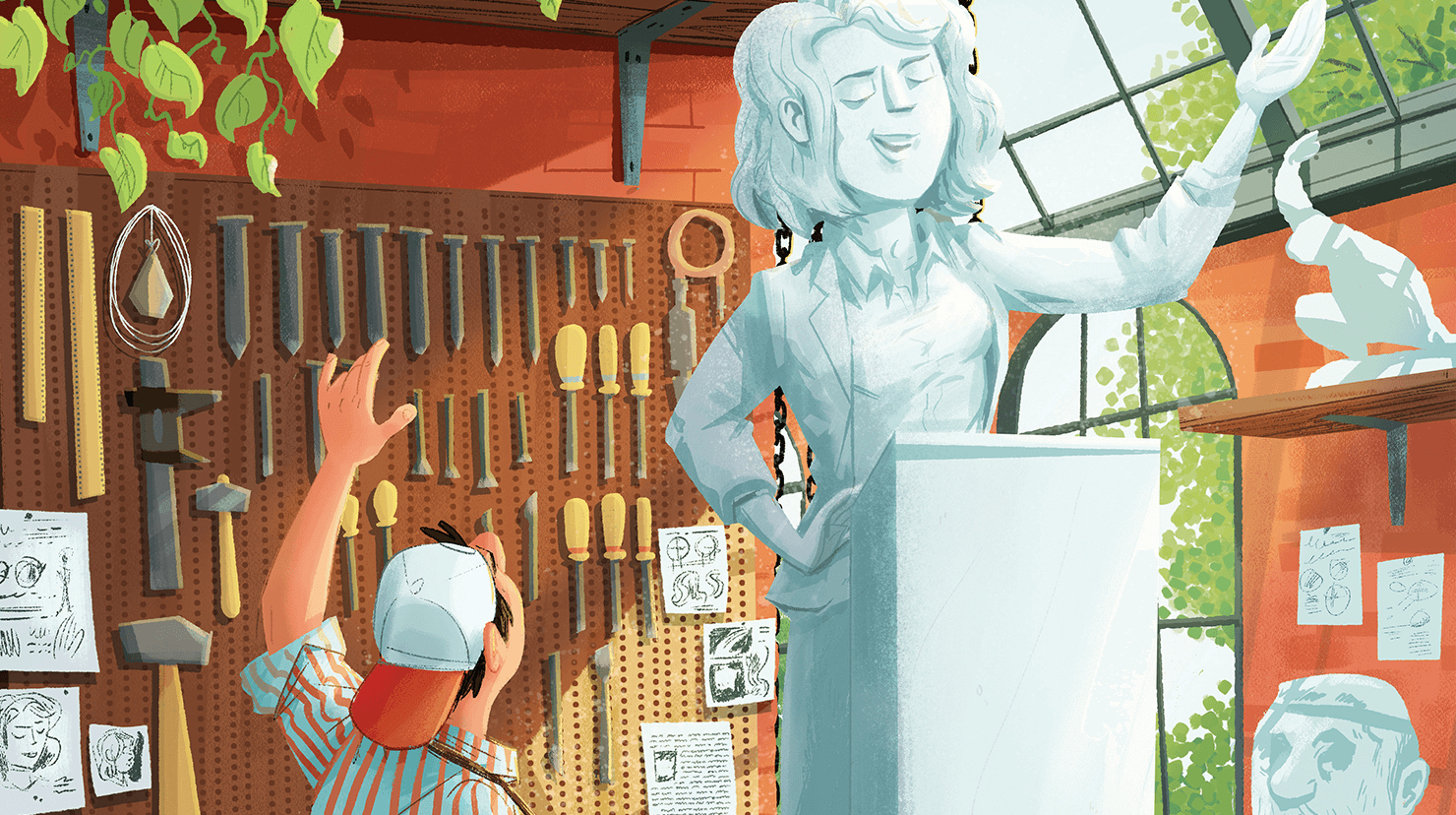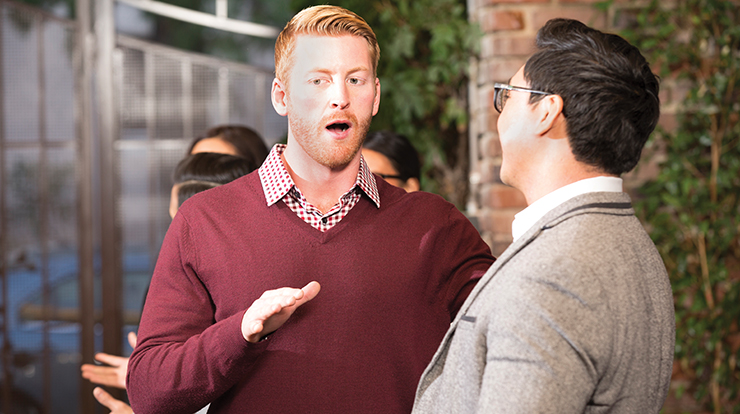
One of the first and best insights I received upon joining Speakeasy Toastmasters in St. Louis Park, Minnesota, came from a 40-year member, Gordon Andersen. “Speeches,” he explained, “are made up of parts and techniques.” Our primary focus in Toastmasters, he continued, is to study both.
As a writer by profession, in full command of my subjects and predicates, nouns and pronouns, I understood the idea of analyzing language—on the page. When it came to speech, however, I had virtually no idea of what he meant.
As I fumbled through my introductory exercises, I learned to isolate the various components of speech—word choice, vocal tone, body movement, and techniques like purpose and organization that bring them all together. By observing and practicing each element on its own, my understanding of what it means to be persuasive grew in tandem with my ability to connect with the people around me.
Indeed, after several years of study, I came to understand that what we learn in our meetings applies as well to virtually every kind of communication—at home, at work, with family and friends. Here are some key skills I’ve learned in Toastmasters that have helped me to be more thoughtful, effective, and connected in everyday life.
Word Choice
In Toastmasters, we learn that being conscious and measured with our word choices can make a speech more enjoyable and persuasive. This principle applies to one-on-one, real-life discussions too.
Be careful with absolutes.
In speeches, we avoid words likely to insult or alienate our audience. What about offstage? Couples, for example, are often shocked to discover the destructive power of the words “always” and “never.” An accusation like “You never say you’re sorry!” is provocative and divisive. Framing the same idea from a more personal perspective yields a far more constructive result: “I wish that you would take the time to apologize when you know you’ve messed up, so we can acknowledge it and move on together.” The goal in both cases is virtually identical. But where the former eliminates any possibility of healing or connection, the latter serves to invite collaboration.Use words designed to resonate with each specific audience.
Almost every demographic describes the world with its own, inward-facing vocabulary. Butchers, garment manufacturers, and librarians, for example, all use the word “rack” to mean something completely different. In Toastmasters, we learn to unpack terms to make them mean the same thing to every member of the audience.In everyday life as in speeches, the perfect word choice has the power to cement shared understanding. When my son, Santiago, was 3 years old, I began to wonder what message he received when I said, “I love you.” Did he understand anything beyond a recognition that the expression meant something vaguely positive? As an experiment one day, I said, “You know what Santi? You make me really happy.” The effect was instant. He beamed. The word had landed squarely in the center of his cognitive universe, describing something he understood, and enlisting him as an active partner. Instead of being the passive recipient of my emotions, he became the guy who causes his big old dad to light up.
Organization
Speakers—or their introducers—often explain at the beginning of a speech what they will talk about and why it might be valuable, and in doing so, they secure their audience’s attention and align both parties’ expectations. While it would be weird to begin every exchange in “real” life with a similar, formal introduction, it pays to be mindful how this principle plays out in most conversations.
Say hello.
Before talking, it’s critical to obtain your listener’s “permission” to talk. Are you interrupting? Are they ready to engage? Initiating conversation at a bad time can be just as ineffective as expressing yourself poorly, or saying something inappropriate.Give adequate context.
In everyday life, it’s exasperating when people tell stories about people and events you aren’t familiar with (“Wait, who’s Travis? How did we get to Kuala Lumpur?”). However you order your comments, always make sure to cover the basics.Let your audience be your guide.
Different listeners can have different expectations for how a conversation will go. In many rural cultures around the world, rushing to the point before exchanging a relaxed greeting comes across as rude. By contrast, in most North American business contexts, such a casual approach can be perceived as unprofessional.We like to think that feeling connected with others is a serendipitous affair. Sometimes it is—but most of the time, it takes conscious effort and knowledge of best practices.
A friend employed by a large financial advisory firm in New York City recently began reporting to a new boss who soon took him aside. “Look,” he said, “You seem smart. But I have about seven seconds to figure out which of the two thousand things people tell me every day I really need to listen to.” He asked my friend to always give the “headline” first, every time they spoke. If it sounds stressful, it was—for a couple of weeks, until he figured it out.
Delivery
We learn in Toastmasters that gestures and vocal variety also amplify (or distract from) presentations. How often in everyday life do we weaken our message with haphazard or unconsciously inharmonious vocal or physical technique?
Be aware of your body.
Most Toastmasters know the damage done by shy, or awkward, onstage body language, but how often in everyday life do we sabotage good communication by slouching during meetings, looking off in the distance, checking our phones, or otherwise failing to demonstrate attentiveness? Of course, relaxed contexts offer greater leeway—but when it counts, ensure that your body language doesn’t send the wrong message.Mind your tone.
Think of a parent’s soothing voice while comforting a child, or an abusive supervisor’s impatient tone while fielding a question. Your voice has the power to create or destroy good will. An editor at a prestigious magazine used to call me on the phone before sending her emailed notes about my most recent draft. “I think this is probably. Some of the best. Writing. I’ve ever. Seen. How do you do it?” Her tone was ironic, one of mock awe, and of course, I knew she was buttering me up for the criticism I’d face in the email. But it worked to ease the pain every time.
We like to think that feeling connected with others is a serendipitous affair. Sometimes it is—but my personal view is that through conscious effort and knowledge of best practices, speech training can vastly improve our mental and emotional health. Think of it this way: When we speak in ways that are confusing or fail to engage our listeners, we push people away. When we are easy to understand and connect with, others find our company more enjoyable. If you could calculate the cumulative effect of good or bad communication habits over time, it would be easy to see how good communications skills enhance or detract from our relations with the people around us.
The ultimate goal of speech education is not to be the most charismatic or persuasive person in the world—or even just to learn to give better speeches—but rather, to be happy and to make others happy as well. The world may not always agree with your point of view, but if you feel connected and understood by the people around you, odds are good that you yourself will be happier as well.
John Bowe is a speech and presentation expert. He is the author of I Have Something to Say: Mastering the Art of Public Speaking in an Age of Disconnection, and a former member of Speakeasy Toastmasters in St. Louis Park, Minnesota. For more information, visit his website.
Related Articles

Profile
I Have Something to Say

Language
The Crafting of Eloquence

Communication



 Previous
Previous
 Previous Article
Previous Article